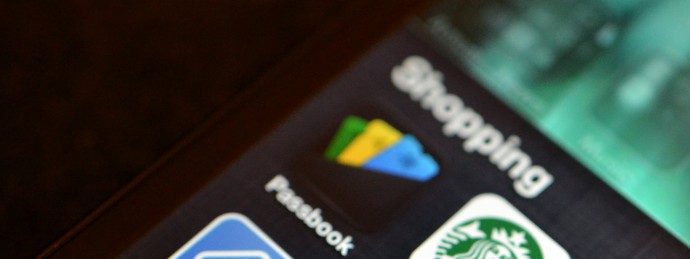Apple has rolled out yet another product that they hope will shake things up: Apple Pay. On October 20th, Apple debuted the service, which allows iPhone 6 and 6 Plus users to make in-store purchases with their phones.
Users are required to connect at least one Visa, MasterCard, or American Express account – from one of the estimated 500 participating banks – to their phones in order to use the payment system. After the bank account has been tied to the device, users need only bring their phones to the register and touch the fingerprint sensor.
Retailers including Macy’s, McDonald’s, Walgreens, and Whole Foods are ready to take on the change.
Growing Pains?
There are a few things that may prevent Apple Pay from immediately overtaking traditional payment methods. First, not all retailers are equipped for this technology. Wal-Mart and Target, for example, do not yet have the expensive machines required to accept Apple Pay.
What machines am I referring to? Apple Pay works by sending information through a system of short-range radio waves called Near Field Communication (NFC). A special chip found in the iPhone 6 and iPhone 6 Plus is necessary to register the information. If stores do not have NFC-enabled machines at checkout, people cannot use Apple Pay at those locations.

Second, with the recent celebrity hacks still fresh in people’s minds, there is a lack of trust in Apple’s security. Bank information is something no one wants stolen, of course, but Apple is adamantly assuring the public that the system is safe. In fact, they claim that using Apple Pay may be more secure than using your old-fashioned plastic.
Finally, not everyone has a newer iPhone. The millions of individuals that are walking around with older versions of – dare I say it – Androids in their pockets will be left out of the loop.
Apple Pay Alternatives
These individuals, while unable to utilize Apple Pay, are not disconnected from the technology as a whole, however. Many Android, Windows Phone, and Blackberry devices already have NFC technology. About 220,000 retailers already have NFC-savvy machines at their registers, too. Google Wallet, Softcard and Paypal are among the services that already function with NFC, although none of them have been successful in replacing plastic. Some may even say that the former two services have flopped.
Does Apple ‘Think Different’?
Apple Pay differs from the competition in that it is faster, safer, and more widely accepted. Older systems require users to enter PINs and other information at checkout, while Apple Pay needs you to put your finger on the screen – that’s it. As for security, Apple Pay requires a fingerprint, thus protecting users from theft and fraudulent purchases.
Lastly, Apple Pay is more widely accepted. Older systems using NFC did not allow purchases to be made with credit cards, for instance. Users could only utilize debit cards, gift cards or accounts tied to actual payment (not credit). Not all banks were accepted before, either, while Apple Pay works with almost all major cards and banks.
If Apple Pay can take off the way Apple is hoping, the service will transform the way people pay for things. That said, similar products have already come and gone. Only time will tell if things will be different for Apple. In the meantime, in regards to NFC payments, while Google Wallet and Softcard try to get organized, Apple Pay may be running away with the lead.

